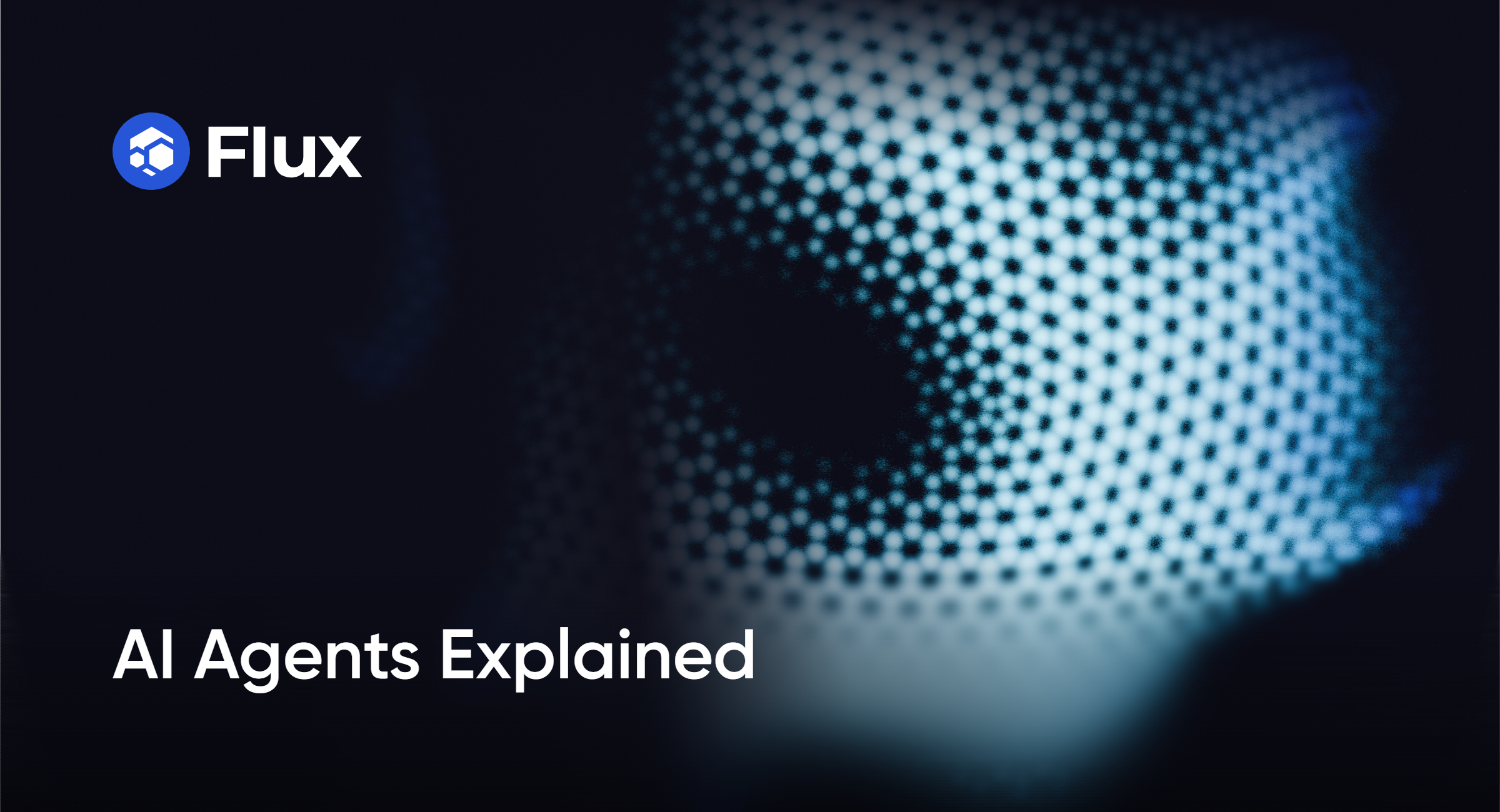A measure of an AI model’s “intelligence” can be its ability to infer meaning through input data. Advanced AI enables a greater level of inference, allowing models to extract more detail and infer more context from a prompt.
Agentic AI represents models equipped with tools to enhance their inference to the point of enabling them to understand an assigned task sufficiently to improve their performance and each output iteratively.
It’s no secret that AI agents are taking over the internet, and with the release of FluxAI Agents, we thought it would be a good time to explore the potential future of automation, so let’s dive in!
What is an AI Agent?
An AI agent refers to a base model, such as an LLM or neural network, wrapped with memory processing and data retrieval tools that enable it to determine how to better achieve user-defined objectives.
For example, a base model can be wrapped with Retrieval Augmented Generation (RAG) or web crawler tools to connect the model with external databases outside of its training environment. Giving the model access to more complex datasets.
Agents are autonomous, capable of interacting with their environment, and can be programmed to execute tasks with minimal human supervision or intervention. Additionally, agents can recall past events or inputs to decide how to perform tasks more efficiently.
Tasks are always user-defined. Agents can’t assign themselves new tasks or understand why they are performing a task; they can only infer how to improve their performance iteratively.
Common Types of AI Agents
Control Loop Agents
Control loop agents achieve user-assigned objectives in iterative cycles, where tasks are divided into steps. Between the completion of each step, the agent receives feedback, which it uses to plan how to execute the next step in the process until the task is completed.
Control loop architecture defines cycles by breaking down each step required to complete a task. For example, a control loop agent could break a task down into the following steps after receiving an input:
Observe (the agent considers the task) → Inference/Plan (the agent drafts a plan to complete the task) → Act (based on user feedback, the agent executes its plan) → Evaluate (the agent receives more feedback and refines its output).

Role-Based Agents
Role-based agents, which perform specific jobs, are defined by the primary function they serve. Whether it be research or coding, there are subjective toolsets and success metrics for each defined role that will determine the agent’s behaviour and interactions.
For example, if we are outlining a research agent specializing in synthesizing and analyzing large volumes of web data, its built-in toolsets could be API plugins that focus on web search functionality, and a key success metric could be factual accuracy.
Environment Agents
Environment AI agents operate within specific surfaces, such as browser or application interfaces, where the constraints of that environment, like its permissions or access parameters, define the agent’s capabilities.
For example, software-only environment agents reside within apps to facilitate telemetry: more efficiently call APIs or automate file storage and annotation.
In Web3, on-chain environment agents reside within blockchain network interfaces, assisting with the execution of smart contracts. The capabilities of on-chain agents are determined by the parameters or constraints defined in smart contract logic.
Multi-Agent Systems
Multi-Agent Systems (MAS) groups individual AI agents together in swarms to achieve user-defined objectives collaboratively, without requiring human intervention.
Agents working together in a MAS can infer how to collaborate and interact more efficiently. One way they do this is by assuming varying defined roles, such as “manager” or “worker,” to delegate specific subtasks and achieve objectives more efficiently.
Closing Thoughts
AI agents are base models wrapped with tools that allow them to reason through the how of what they’re doing: planning and iterating within under-defined parameters. Agents can infer how to do something better, but not why they’re doing it. Furthermore, AI agents can only execute predetermined tasks; they are not able to assign themselves new tasks to accomplish.
Agents signify a massive leap forward in system autonomy, and FluxAI Agents are right there to lead the way. Discover how our intelligent workflows can help you enhance your operations by hiring your own AI agent, and follow us on X for all the latest AI agent updates!
